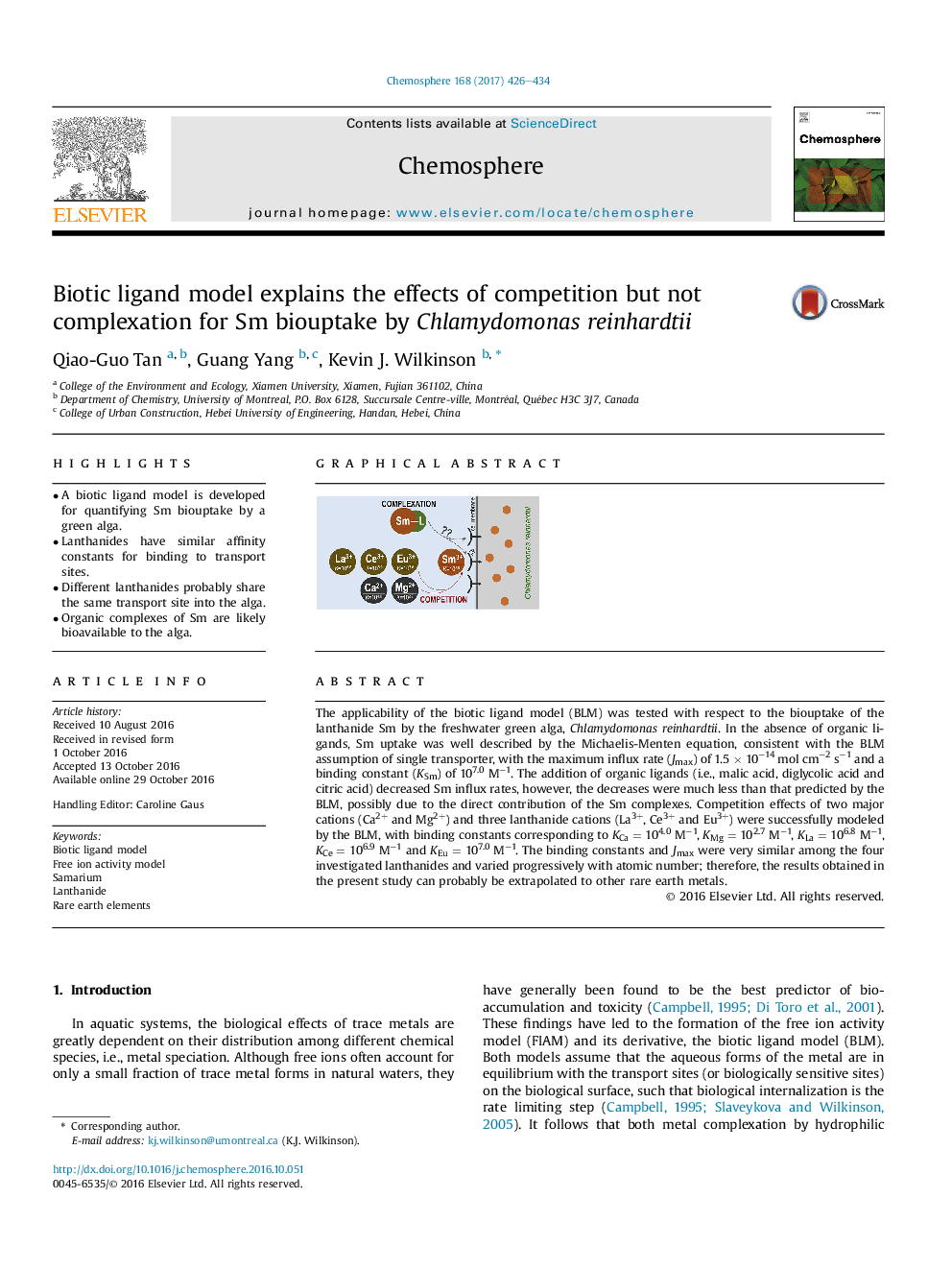| کد مقاله | کد نشریه | سال انتشار | مقاله انگلیسی | نسخه تمام متن |
|---|---|---|---|---|
| 5746597 | 1618803 | 2017 | 9 صفحه PDF | دانلود رایگان |

- A biotic ligand model is developed for quantifying Sm biouptake by a green alga.
- Lanthanides have similar affinity constants for binding to transport sites.
- Different lanthanides probably share the same transport site into the alga.
- Organic complexes of Sm are likely bioavailable to the alga.
The applicability of the biotic ligand model (BLM) was tested with respect to the biouptake of the lanthanide Sm by the freshwater green alga, Chlamydomonas reinhardtii. In the absence of organic ligands, Sm uptake was well described by the Michaelis-Menten equation, consistent with the BLM assumption of single transporter, with the maximum influx rate (Jmax) of 1.5 Ã 10â14 mol cmâ2 sâ1 and a binding constant (KSm) of 107.0 Mâ1. The addition of organic ligands (i.e., malic acid, diglycolic acid and citric acid) decreased Sm influx rates, however, the decreases were much less than that predicted by the BLM, possibly due to the direct contribution of the Sm complexes. Competition effects of two major cations (Ca2+ and Mg2+) and three lanthanide cations (La3+, Ce3+ and Eu3+) were successfully modeled by the BLM, with binding constants corresponding to KCa = 104.0 Mâ1, KMg = 102.7 Mâ1, KLa = 106.8 Mâ1, KCe = 106.9 Mâ1 and KEu = 107.0 Mâ1. The binding constants and Jmax were very similar among the four investigated lanthanides and varied progressively with atomic number; therefore, the results obtained in the present study can probably be extrapolated to other rare earth metals.
223
Journal: Chemosphere - Volume 168, February 2017, Pages 426-434